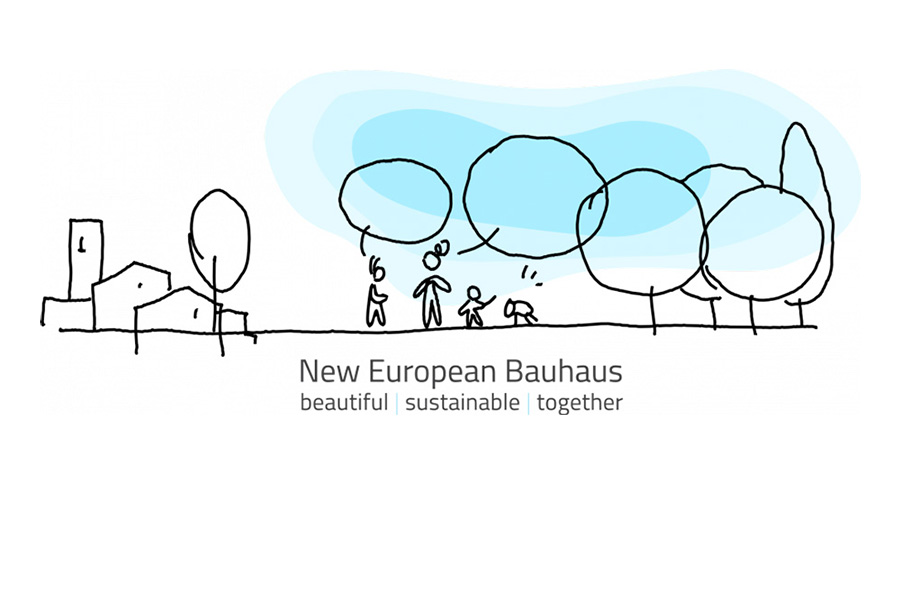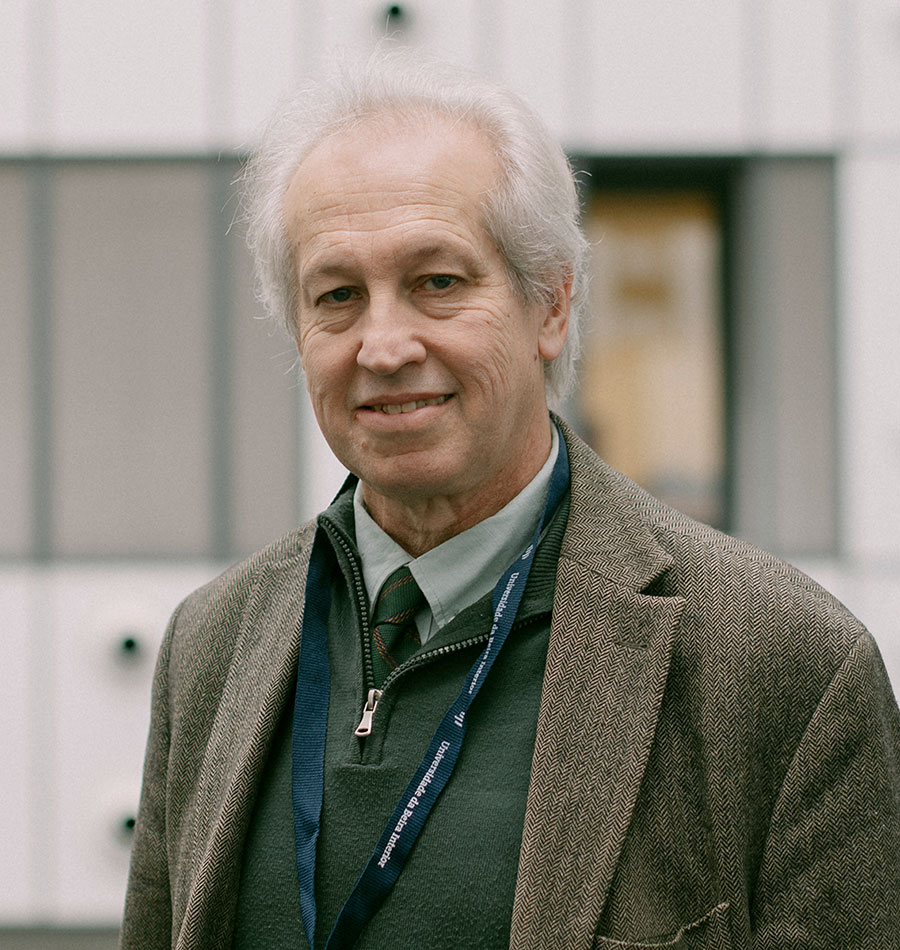Expert’s Panel
Ana Maria Evans & Pedro das Neves
The New European Bauhaus (NEB) is a recent European Commission initiative, announced by President Ursula Von der Leyen in her 2020 State of the Union address. It is part of a wide-reaching effort by the European Union’s institutions to lead a paradigmatic shift in lifestyle and industrial and entrepreneurial activity in response to mounting climate and environmental threats.
Amidst the comprehensive package of policy measures implemented by the European Commission to implement the Paris Agreement and 2030 Agenda for Sustainable Development, the NEB is materialised as a fully co-created programme. Currently in the design phase, the programme calls on citizens and scientists from various fields, ranging from economics to the arts, architecture, engineering, design, material sciences, urban studies, environmental research, and cultural studies, to propose innovative solutions for systemic green change.
The NEB concept revolves around community, accessibility, circularity, affordability, simplicity, creativity, art, culture, experimentation, connection, togetherness, and socio-economic and gender equity. The co-creation effort aims to stimulate public and business mindsets to concepts of living based on sustainability, inclusiveness, aesthetics, quality of experience, climate protection, and biodiversity preservation. The goal will be to accelerate the transition to green and inclusive urban, professional, industrial and market models. The European Commission highlights the purpose of a living movement:
“The New European Bauhaus proposes to focus our conversations on the places we inhabit and on our relationship with natural environments, beyond the built space. It is a practical approach to discover beautiful, sustainable and inclusive ways of living and to use them to inspire our way forward.” (1)
In line with the Commission’s effort to mobilise all sectors on the path to green ecosystems, we have challenged renowned corrections experts to discuss their views on how the New European Bauhaus can be applied and implemented in the correctional sector.
Each expert invited to this panel has contributed with a focus on their specific area of expertise. Their valuable opinions provide authentic food for thought on this topic that we are happy to share with readers.
___
(1) European Commission. (n.d.). Co-designing the New European Bauhaus. Retrieved 5 May 2021, from https://europa.eu/new-european-bauhaus/co-design/co-designing-new-european-bauhaus_en
The New European Bauhaus: the experts’ view
Imagine a prison built from normative materials (…) where waste energy and carbon emissions are used to grow food that is then shared with the community (…)
Robert Boraks, Architect & Director of Parkin Architects
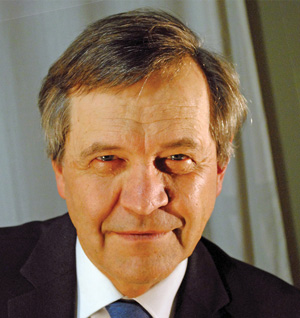
Robert Boraks
Architect & Director of Parkin Architects
The New European Bauhaus intends to capture the spirit of the original Bauhaus social vision. All parts would come together in a holistic unity, and functionalism and simplicity would help elevate and empower humanity. The original movement had a tremendous effect on the development of architecture and humanity on a global scale. But this time, the challenge is to generate unity on the Environment, hence supporting the EU’s commitment to minimise the destruction of our world.
The NEB programme will identify projects that will help to inspire future development, just as Gropius was able to do. I cannot think of a more appropriate building typology to inspire than that of the future prison. Climate change is driven by carbon dumped into the atmosphere from numerous sources, including transportation, heat production, manufacturing, agriculture, and construction.
Prisons fall at the nexus of all of these contributors. In addition to relying on building and operating systems with high embodied energy, prisons have not often served as beacons of empowerment and dignity. Yet prisons are unique in that they are or should be self-contained petri dishes. Imagine a prison built from normative materials, primarily wood, where waste energy and carbon emissions from heat and energy production are used to grow food that is then shared with the community – a complete circle where Man is a constituent and equal part of the Environment. This is possible.
Eighty per cent of EU prisons still reflect outdated criminological and psychological concepts. We must look for care-oriented prisons in a digital ecosystem.
Hans Meurisse, Vice-President, ICPA International Corrections and Prisons Association & Chairperson of the ICPA European Chapter
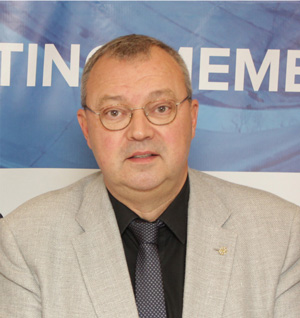


Hans Meurisse
Vice-President, ICPA International Corrections and Prisons Association
& Chairperson of the ICPA European Chapter
Eighty per cent of the prisons in the European Union still reflect outdated criminological and psychological concepts. We must look for care-oriented prisons in a digital ecosystem. For a long time, little importance has been given to the conceptualisation, planning, design, and future-proofing of sustainable investments for correctional facilities. However, change began little by little.
With more accessible evidence-based knowledge, accommodation in prisons started to be connected to aesthetic aspects. New facilities or renovated older housing capacity can be “beautiful”, more sustainable and better for staff and inmates. Aesthetic facilities contribute to better mental health for all and create “normal” living spaces and environments that are key to the future social reintegration of inmates. Modern materials and smart units will improve the quality of life for all persons.
The New Bauhaus correctional facility will be energy neutral, will have plenty of light, good air circulation and green spaces. Project management will be steered by specialised in-house correctional technical staff with knowledge of modern construction methods and engineering skills and have an ecological focus. In addition, there must be a concern to adopt the right level of security, balancing advanced technology and care solutions. Reintegration must be thought and planned from day one.
On the path to social reintegration, technology must stimulate “autonomy of life” for inmates and enhance preparation for accessing digital applications, similar to life outside the prison. Detention spaces, including accommodation, work, education, treatment and leisure areas, must be aligned with risk assessment cycles and facilitate the path towards reintegration into the community. Social interventions in the community and electronic monitoring can support the offender’s transition into society.
Finally, to successfully apply the New European Bauhaus precepts in the correctional sector, we need modern Offender Management Systems (software). These should integrate applications that all stakeholders can easily use, including the police, courts, public prosecutors, probation services, and NGOs. Organisations such as the International Corrections and Prisons Association (ICPA), EuroPris and the Confederation of European Probation are crucial to disseminating the new paradigm, encouraging mutual knowledge sharing among the sector’s professionals and providing the necessary digital platforms and knowledge repositories that may facilitate this.
The “mutualisation” of costs will improve access to investment during the transition to the new paradigm.
We should be talking about creating community therapeutic hubs focused on prevention, recovery, restoration and criminal desistance.
Marayca Lopez, Justice & Civic Planning Leader, DLR Group
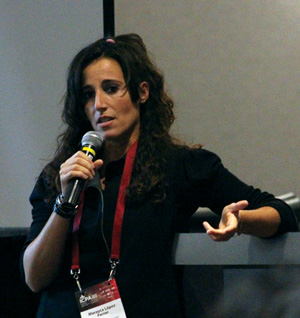


Marayca Lopez
Justice & Civic Planning Leader,
DLR Group
The exploration of the impact that aesthetics, physical layout, furnishings, materials, lighting, and colours can have on a correctional facility’s overall user experience (i.e. physical and mental health, safety and well-being) is not new. The principles of “normality” and “normalisation” (2) have already been imported into the daily routines and interior design of the latest generation of correctional buildings, precisely to change the way a modern correctional facility should look and feel: welcoming, pleasant, dignifying, humane and safe. Likewise, a significant amount has been written about the greening of corrections (3). However, we are still talking about a “correctional” building and, with few exceptions here and there, the physical structure of these institutional buildings has barely changed over time.
The innovation and creativity requested by the New European Bauhaus should then lead us to rethink both the paradigm shift and the improvements in architectural form needed to create a new “ideal” (correctional) building type. Considering current social movements and the demands and visions of contemporary activists to meaningfully address the core problems of poverty and other social inequities linked to criminal behaviour, we should be talking about creating community therapeutic hubs focused on prevention, recovery, restoration and criminal desistance.
How should these new structures work? These community therapeutic hubs would function as one-stop-shop centres anchored in the community. Justice-involved people, vulnerable people and those at-risk of becoming involved would therefore access a network of multi-disciplinary human, health, and social care providers and agencies working together and with each client to develop individualised plans, creating pathways to success and law-abiding lives.
What would be our new habits? Working collaboratively and inclusively with others, rather than in silos, would be the new habit. This would address the underlying root causes of crime more holistically and comprehensively, helping people navigate the clinical, social, and criminal justice systems effectively and efficiently. In turn, an integrated and coordinated approach to service delivery and care would reduce the current fragmentation, overlap and duplication of services.
If correctional agencies are to be part of the solution to end contemporary societal crises such as the homeless, opioid, and behavioural crises, radically new working practices and facility structures are needed to align architectural form, spaces, and mission. So, let’s dare to reimagine the most meaningful and transformative way forward.
___
(2) This corresponds well with the European Prison rules published by the Council of Europe according to which: “Life in prison shall approximate as closely as possible the positive aspects of life in the community”, with Rule 5 further emphasizing that: “active steps should be taken to make conditions in prison as close to normal life as possible and to ensure that this normalisation does not lead to inhumane prison conditions” (Rec (2006)2 of the Committee of Ministers to the member states on the European prison rules).
(3) U.S. Department of Justice, National Institute of Corrections, & U.S. Department of Justice National Institute of Corrections (Eds.). (2011). The Greening of Corrections: Creating a Sustainable System. 75. AIA Academy of Architecture for Justice. (2015). Sustainable Justice Guidelines [PDF]. Retrieved from https:// content.aia.org/sites/default/files/2016-04/AAJ-sustainable-justice-guidelines.pdf
High-quality environments linked to nature can help build and nurture self-esteem and respect (among inmates and prison staff). Halden prison is the embodiment of the green prison
Are Høidal, Governor, Halden Prison, Norwegian Correctional Service



Are Høidal
Governor, Halden Prison, Norwegian Correctional Service
Correctional services around the world must actively relate with the “Green shift” and the Paris Agreement. There are many possibilities for that, both “behind bars” and in the field of probation. The New European Bauhaus initiative presents numerous good ideas that inspire us to think innovatively about the future development of correctional services in the EU and elsewhere. It is important to motivate our stakeholders – including the inmate population – to join the green shift, as there are many green elements that we can focus on in a prison. Halden prison is a good example. Architecturally, Halden prison, whether in its interior design or the outdoor landscape, focuses on green and environmental elements. These elements have contributed to attracting global attention to the Halden model. The Halden prison facilities are composed of simple building modules placed within a beautiful forest landscape.
The construction emphasises generous dimensions, openness, light and high-quality materials to create an environment that goes against the traditional prison design and architecture, providing a new perspective. You can tell the functions of each building by the selection of materials and the connection with the surrounding landscape. Moreover, separate modules create a flux of people, reflecting our daily journeys between home, school, workplace, etc., hence integrating the principle of normality.
Space is defined by the idea that high-quality environments linked to nature can help to build and nurture self-esteem and respect. Facilities are designed “to meet the needs of both inmates and prison staff in a friendly and non-authoritarian way. Therefore, the emphasis is on good relationships, good dimensions, quality of materials and robustness of forms” (according to the “Final Report on the Halden Prison”), again following the principle of normality and assuming that the prison sentence should aim at social reintegration. The more closed a system is, the more difficult it will be to return to freedom.
We believe that the quantity and quality of our activities and our reintegration efforts towards inmates are the main reasons for the low level of aggression and violence and the overall good compliance with prison regulations in Halden prison. Inmates appreciate the facilities, the surroundings, and the reduced feeling of being in a high-security prison. In addition, Halden prison is Norway’s first solar-powered prison, and a pilot project in the Norwegian Correctional Service.
The Norwegian government has allocated millions in a package of measures to encourage the green change, and we have seized the opportunity. Climate-friendly solutions such as solar power are in focus, as they benefit both the environment and users. In the case of Halden prison, solar panels were installed on accessible roof surfaces, amounting to many square meters of solar cells throughout the prison facilities.
Other ‘green shift’ elements at Halden prison include the reuse of textiles, furniture and other items (inmates learn how to manage and reuse and reduce the amount of waste, something that makes sense from an economic as well as an environmental point of view); waste sorting, which contributes to a better environment as well as to the employability of offenders, considering the increasing number of companies dedicated to waste sorting and recycling in the community; and an increased use of “green products”, such as fair-trade products and organic foods.
Digital solutions like cell devices for prisoners can also support environmental values by reducing paper waste.
Pia Puolakka, Project manager, Criminal Sanctions Agency of Finland
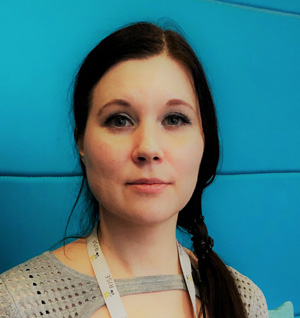


Pia Puolakka
Project manager, Criminal Sanctions Agency of Finland
The New European Bauhaus and the new Green paradigm would benefit the corrections sector too. This kind of concepts in prisons would motivate prisoners to become engaged in taking care of the environment and their own and others’ well-being. Existing spaces and structures could also be reshaped, but ideally, new units would be designed following this concept from the outset.
I would start from sustainable choices in everyday prison life, more green and open spaces and more aesthetic choices instead of “institutional” interior design choices.
Digital solutions like in-cell devices for prisoners can also support environmental values by reducing paper waste.
Increasing prisoners’ environmental awareness helps prisoners make more sustainable choices in everyday prison life and life outside, including recycling, green care and sustainable decisions in their purchases.
To help reintegration, prisoners should feel that their choices can have an effect and meaning on a larger scale, like for the well-being of society and the environment in general. Sustaining and promoting well-being is the opposite of criminal behaviour and lifestyles that destroy the environment and people.
So, the new paradigm could help change the prisoners’ mindset and support the aim to reduce recidivism and help to reintegrate them into society. Learning a new way of living together and taking joint responsibility for our social and environmental surroundings is something prisoners need, not an antisocial lifestyle. However, measuring such change would require appropriate research. At any rate, prison staff and correctional design and concept should provide an example for prisoners to adopt this new lifestyle.
Technology and artificial intelligence will change control methods and give staff and residents greater control of their work and living environment. Expect a greater emphasis upon the use of natural light, especially in the accommodation units and more normalised furnishings that meet increasingly higher standards.
Steve Carter, Founder & Executive Vice-President for Global Strategic Development, CGL Companies



Steve Carter
Founder & Executive Vice-President for Global Strategic Development, CGL Companies
If fully implemented, the New European Bauhaus (NEB) can have an even more significant impact on architecture than the original war-shortened Bauhaus movement. From a design perspective, the original Bauhaus was an attempt to integrate arts and crafts into the process of creating and engineering buildings.
While already practised in forward-thinking jurisdictions, achieving the NEB design aims in the carceral environment will continue to require additional research and constructed examples that demonstrate the security and economy of broader applications of science, technology and environment in these building types.
Regarding the specific materialisation of the NEB concepts in the correctional design sector, expect to see less “scorched earth” approaches to the siting of future establishments and the re-forestation of new and existing rural and urban sites. Food producing gardens using traditional and new hydroponic methods of production will return to the carceral environment.
Technology and improved material testing will yield a broader range of sustainable building products. Expect to see a return of wooden structures. Technology and artificial intelligence will change control methods and give staff and residents greater control of their work and living environment. Expect a greater emphasis upon the use of natural light, especially in the accommodation units and more normalised furnishings that meet increasingly higher standards recommended by the European Green Deal.
Perhaps the most important change will be, through continuing education opportunities, greater staff and management involvement in promoting the NEB concepts, involving large scale changes in recruitment and staff training programmes.
The New European Bauhaus could support the development of innovative concepts that keep offenders within the community as much as possible, focus on restoration and responsibility, resize offender warehouses into supportive and engaging places, and embrace new technologies to generate time and space for humans to work with humans, in a safe and sustainable environment.
Steven van de Steene, Enterprise architect and Corrections technology consultant
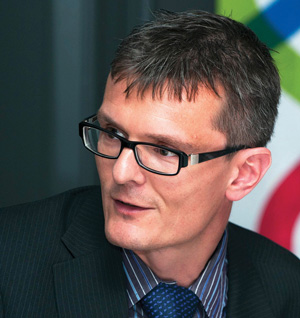


Steven van de Steene
Enterprise architect and Corrections technology consultant
Speaking of the New European Bauhaus (NEB) as an ambitious programme seems an understatement to us. Promoting a paradigm shift in lifestyle and industrial and entrepreneurial activity is one thing, but actually materialising a fundamental change in our society, how we work and live is far from easy to achieve.
It seems almost unrealistic to change concepts of life and work based on sustainability, inclusiveness, aesthetics, quality of experience, protecting the climate and preserving biodiversity if at the same time we don’t create an environment where fundamental social and economic concepts like profitability, consumerisation, free-market, continuous economic growth and globalisation can be challenged and even refactored. Many mechanisms underlying these elements have been a threat to our climate, biodiversity, health and global well-being for over a century.
In thinking about what this would mean for corrections, we strongly believe that the materialisation of a paradigm shift in how we react to crime in a more sustainable, inclusive and humane manner will also require a lot of courage to challenge traditional punishment, incarceration, and retribution models.
As an Enterprise Architect and Corrections technology consultant, I’m often confronted with a conservatism that finds its origin in walls, and barbed wire focused on security dogmas and risk aversion, which is extremely difficult to turn around.
We believe programmes such as the New European Bauhaus could most probably further support the many existing ideas and initiatives to change our traditional offender management approaches. It could furthermore support the development of innovative concepts that keep offenders within the community as much as possible, focus on restoration and responsibility, resize offender warehouses into supportive and engaging places and embrace new technologies to generate time and space for humans to work with humans in a safe and sustainable environment.
However, we can only reach the realisation of a sustainable paradigm shift if this programme also addresses public opinion and policymakers, advocates legislative changes challenging existing criminal law, and supports multi-disciplinary collaboration between all stakeholders in the broad correctional ecosystem.
What about you?
Let’s grab the opportunity created by the launch of the New European Bauhaus to revisit the way we think about prisons. We look forward to receiving and publishing your contribution.
• How do you envision the New European Bauhaus and the new Green paradigm of aesthetic and sustainable inclusiveness in the corrections sector?
• How would you design the New Bauhaus correctional facility, modus operandi, and social purpose?
• Would you propose a whole new concept, a new transformative way of living together on the path to social reintegration?
• How would you like to see the places where you work as a justice professional transformed?
• What emblematic examples and practices would you suggest?
• What would be the most effective path to outreach and to disseminate this new paradigm?
• Do you have suggestions on how to solve the investment and accessibility challenges associated with the transition?
• Can beauty and aesthetics become a part of the institutional narrative in the correctional sector?
• Should mental sustainability be part of the new framework?
• How would you measure change?
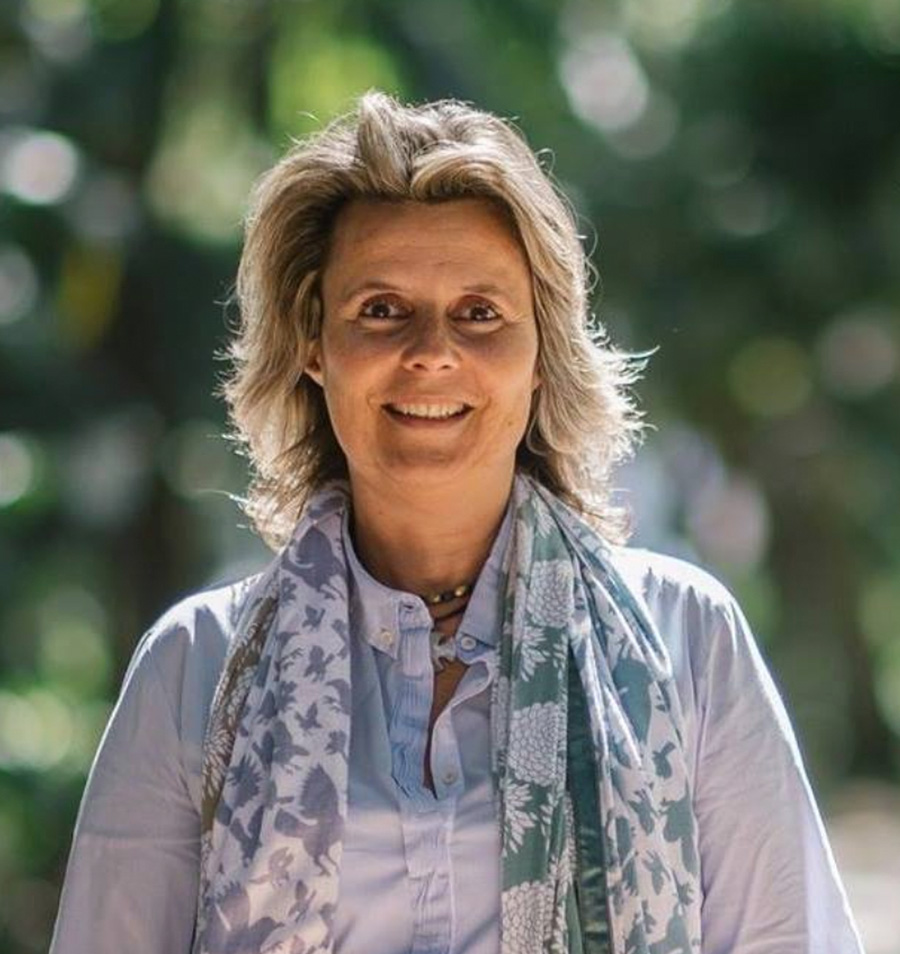


Ana Maria Evans
Ana Maria Evans is Chief Innovation Officer at IPS_Innovative Prison Systems and an Invited Professor in the “Philosophy, Politics and Economics” (PPE) programme of the Portuguese Catholic University. Ana holds a degree in Law from the Catholic University of Lisbon, an M.A. in International Relations, from the University of San Diego, and a PhD in Government, from Georgetown University.
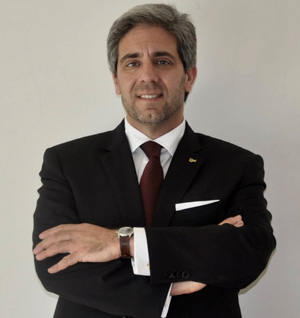


Pedro das Neves
Pedro das Neves is the CEO of IPS_Innovative Prison Systems and ICJS_Innovative Criminal Justice Systems Inc. Moreover, he is a member of the Board of Directors of ICPA – International Corrections and Prisons Association, and BSAFE LAB – Law Enforcement, Justice and Public Safety Research and Technology Transfer Laboratory, of University Beira Interior. Pedro holds an M.A. from the College of Europe in Bruges.

